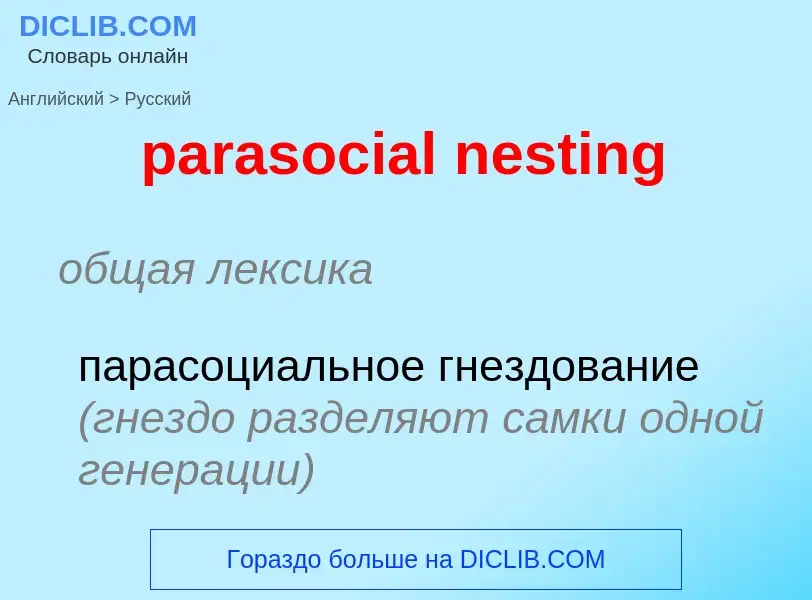Vertaling en analyse van woorden door kunstmatige intelligentie
Op deze pagina kunt u een gedetailleerde analyse krijgen van een woord of zin, geproduceerd met behulp van de beste kunstmatige intelligentietechnologie tot nu toe:
- hoe het woord wordt gebruikt
- gebruiksfrequentie
- het wordt vaker gebruikt in mondelinge of schriftelijke toespraken
- opties voor woordvertaling
- Gebruiksvoorbeelden (meerdere zinnen met vertaling)
- etymologie
parasocial nesting - vertaling naar russisch
общая лексика
парасоциальное гнездование (гнездо разделяют самки одной генерации)
['nestiŋ]
общая лексика
гнездование
вложение, вложенность
размещение одной структуры внутри другой, например вложенные циклы
компоновка [крупного] изображения из фрагментов или вёрстка макета страницы
гнездный
гнездовой
Смотрите также
существительное
морской термин
уборка шлюпок одна в другую
общая лексика
гнездовое поведение
Definitie
Wikipedia

Nesting algorithms are used to make the most efficient use of material or space by evaluating many different possible combinations via recursion.
- Linear (1-dimensional): The simplest of the algorithms illustrated here. For an existing set there is only one position where a new cut can be placed – at the end of the last cut. Validation of a combination involves a simple Stock - Yield - Kerf = Scrap calculation.
- Plate (2-dimensional): These algorithms are significantly more complex. For an existing set, there may be as many as eight positions where a new cut may be introduced next to each existing cut, and if the new cut is not perfectly square then different rotations may need to be checked. Validation of a potential combination involves checking for intersections between two-dimensional objects.
- Packing (3-dimensional): These algorithms are the most complex illustrated here due to the larger number of possible combinations. Validation of a potential combination involves checking for intersections between three-dimensional objects.



![[[Groundhog]] gathering nesting material for its warm [[burrow]] [[Groundhog]] gathering nesting material for its warm [[burrow]]](https://commons.wikimedia.org/wiki/Special:FilePath/Marmota monax UL 07.jpg?width=200)

![Wood rat (''Neotoma lepida'') nest at [[Joshua Tree National Park]] Wood rat (''Neotoma lepida'') nest at [[Joshua Tree National Park]]](https://commons.wikimedia.org/wiki/Special:FilePath/Wood rat (Neotoma lepida) midden.jpg?width=200)
